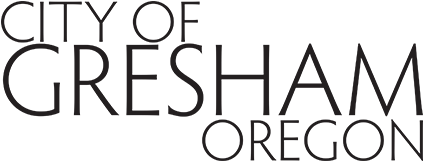- Home
- Fire Department
- Fire Prevention Inspections
Fire Department
Fire Prevention Inspections
For more information about fire inspections, call 503-618-2355.
Fire marshals inspect local businesses to ensure they meet current safety requirements. When hazards are noted, follow up inspections are conducted to meet compliance.
Prepare for your inspection
Some businesses are required to treat decorative materials with flame-spreading characteristics. A partial list:
- Drapes/curtains
- Fireplace rugs
- Paper and cardboard decorations
- Wall decorations
- Natural Christmas trees
There must be a clear working space with at least 36 inches in front electric equipment such as:
- Switch boards
- Control panels
- Switches
- Circuit breakers
- Motor controllers
- Relays
- Equipment
The floor in front of such equipment should be marked “No Storage.”
- All entrances and exits must provide free and unobstructed movement from any part of the building.
- All exits within an occupied building must be illuminated. Depending on the situation, lighting can be provided by natural or artificial means.
- In many cases, a separate emergency source of illumination is required to allow normal exiting of the building in the event normal lighting fails.
- Exits must be properly marked and visible from any direction of access corridors.
- Readily visible signs must mark all access ways to guide occupants to exits when the exit is not immediately visible.
- Any area of a building that is occupied by tables, chairs or other movable furniture must maintain a minimum of 36 inches of clear aisle space to provide immediate access to exits.
- All exits must be identified and illuminated as outlined in fire and building codes.
- Extension cords are not permitted in any commercial occupancy.
- Any temporary wiring for electrical power and lighting shall not exceed 90 days.
- When in use, a multi-plug power strip/tap shall be plugged directly into an approved receptacle.
- The power strip/tap must be equipped with a built-in circuit breaker.
- The power strip/tap shall be maintained in good condition without splices, deterioration or damage.
- Businesses with a fire alarm system must make sure it's tested and maintained annually.
- Alarm monitoring agencies should be notified before any test or maintenance is performed to prevent any false alarm notifications to the Fire Department.
- Annual maintenance of fire alarm systems must be conducted by a qualified company and a checklist detailing the service should be forwarded to the Fire Department for review.
Fire extinguishers must be serviced annually. Place extinguishers in locations that:
- Provide uniform distribution.
- Provide easy accessibility.
- Are relatively free from blocking by storage and equipment or both.
- Are near normal paths of travel.
- Are near entrance and exit doors.
- Are free from the potential of physical damage.
- Are readily visible.
- Are installed on a floor-by-floor basis.
- Have a travel distance not over 75 feet in any direction.
- Are no more than 60 inches from the floor to the top of the extinguisher.
- Label containers clearly and in a well-ventilated area away from any flame or heat source.
- Check with Fire for the maximum allowable storage amounts and container sizes.
- Lock away gasoline when not in use.
- Never store gasoline in glass, unapproved plastic containers or in a metal can with any plastic parts.
- Use all-metal, welded seam, vapor-proof cans with flame arresters and pressure release valve, or spring-closing lids with spout covers, or approved plastic containers.
You may be required to post these placards.
The National Fire Protection Association card ID system helps firefighters and emergency responders quickly decide on evacuation and emergency control procedures.
New business fire code requirements
Gresham Fire's common fire safety requirements, in the 2014 Oregon Fire Code (OFC), applicable to businesses opening in a new location.
This list is not all inclusive of the OFC requirements for your business. If there are requirements specific to your business operations, you will be notified during your business license fire inspection.
The use of any liquid-fueled, unvented heating appliance such as kerosene heaters is only permitted in one or two-family residences.
Basic guidelines
- Gasoline should never be used in portable kerosene heaters.
- Keep all heating appliances at 3 three feet away from all combustibles.
- Use only heaters with tip-over control and limit switches.
All other types of heating appliances must be installed and conform to the requirements outlined by the Oregon Mechanical Program.
- Visually check your sprinkler heads each month to ensure at least 18" clearance is maintained from all stock, obstruction, etc.
- Do not hang anything from the sprinkler heads.
- Do not hit or tamper with the sprinkler heads.
- The fire department and your service maintenance provider must be notified immediately when any malfunction occurs in an automatic sprinkler system.
- Annual maintenance must be conducted by a qualified company. A checklist detailing the service should be forwarded to Gresham Fire for review.
- Do not paint any sprinkler head. This reduces the efficiency of your system. Any painted sprinkler head must be replaced.
- Main control valves must be secured in the open position at all times.
- Fire Department connections must be clearly marked and free from obstruction at all times.
- Post indicator valves must be open and secured in this position with a padlock.
- Design Review
- Plan Review
- Inspection
A design review is performed before submitting a plan for building permits. Zoning, planning, building and fire issues are probed during this review.
Sprinkler or alarm systems may be recommended or required due to the type of construction, size of structure, occupancy type and special applications that are proposed.
The design review process focuses on:
- Fire department access
- Water supplies for fire hydrants
- Location of hydrants
Once an applicant has met the design review requirements, a formal plan must be submitted for the project to receive permits for construction.
Fire’s plan review ensures access and water supplies meet the requirements spelled out in design review.
Structures and systems are examined for all fire and life safety issues presented in the Oregon Fire Code and supported standards. Special system review and any high pile or hazardous materials storage use is also examined.
Once a structure is complete, an inspection of all fire-related issues is conducted to ensure compliance with the reviewed plans and requirements.
Sprinkler systems are inspected prior to covering to ensure the installation meets the requirements of applicable National Fire Protection Association codes. Alarms and all other systems are also inspected to ensure they function properly.
The building may be occupied once all requirements are met and the permit has been approved by the appropriate City departments.





